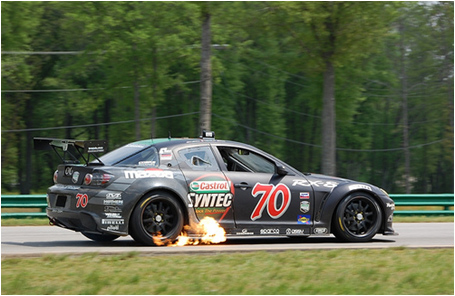
Source: SpeedSource Mazda With a Flame, Hunterrrr, Flickr

Source: SpeedSource Mazda With a Flame, Hunterrrr, Flickr
In the previous lesson we learned how to calculate momentum of a moving object. Remember that momentum (p) is an object’s mass multiplied by its velocity.
p = mv
In this lesson, we will be looking at what happens when we apply a force to change an object’s momentum. When a force is applied to an object over a length of time, scientists call it impulse.
Impulse is calculated by multiplying force times time interval.
![]() Scroll over each variable in the equations below:
Scroll over each variable in the equations below:
Putting these two definitions together gives us the impulse – momentum theorem:
F (Δt) = m (vf – vi)